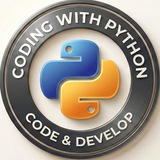Code With Python
Photo
### 3. Dark Mode Detection
---
## 🔹 Practical Example: Plugin-Based Text Editor
---
## 🔹 Best Practices for Production Apps
1. Error Handling
- Implement comprehensive logging
- Use sentry.io for crash reporting
- Create recovery mechanisms
2. Update Strategy
- Implement delta updates
- Support rollback capability
- Verify digital signatures
3. Accessibility
- Set proper widget roles
- Support screen readers
- Ensure keyboard navigation
4. Security
- Sanitize all inputs
- Use HTTPS for network requests
- Secure sensitive data storage
5. Testing
- Unit tests for core logic
- UI tests with QTest
- Cross-platform testing matrix
---
### 🎉 Congratulations on Completing the Series!
You've now mastered:
1. PyQt5 Fundamentals
2. Advanced Widgets & Customization
3. Database Integration & MVC
4. Networking & Multimedia
5. Internationalization & Deployment
6. Advanced Architecture & Optimization
#PyQt5Mastery #ProfessionalGUI #PythonDevelopment 🚀
def is_dark_mode():
if sys.platform == "darwin":
# MacOS dark mode detection
process = subprocess.Popen(
["defaults", "read", "-g", "AppleInterfaceStyle"],
stdout=subprocess.PIPE, stderr=subprocess.PIPE)
out, _ = process.communicate()
return out.strip() == b"Dark"
elif sys.platform == "win32":
# Windows 10+ dark mode detection
try:
import winreg
key = winreg.OpenKey(
winreg.HKEY_CURRENT_USER,
r"Software\Microsoft\Windows\CurrentVersion\Themes\Personalize")
value, _ = winreg.QueryValueEx(key, "AppsUseLightTheme")
return value == 0
except:
return False
else:
return False # Default to light mode on other platforms
---
## 🔹 Practical Example: Plugin-Based Text Editor
class TextEditor(QMainWindow):
def __init__(self):
super().__init__()
self.plugins = []
self.setup_ui()
self.load_plugins()
def setup_ui(self):
# Core editor
self.editor = QPlainTextEdit()
self.setCentralWidget(self.editor)
# Plugin toolbar
self.plugin_toolbar = QToolBar("Plugins")
self.addToolBar(Qt.LeftToolBarArea, self.plugin_toolbar)
# Plugin menu
self.plugin_menu = self.menuBar().addMenu("Plugins")
def load_plugins(self):
plugin_dir = os.path.join(os.path.dirname(__file__), "plugins")
if not os.path.exists(plugin_dir):
return
for filename in os.listdir(plugin_dir):
if filename.endswith('.py'):
try:
spec = importlib.util.spec_from_file_location(
f"plugins.{filename[:-3]}",
os.path.join(plugin_dir, filename))
module = importlib.util.module_from_spec(spec)
spec.loader.exec_module(module)
for name, obj in inspect.getmembers(module):
if (inspect.isclass(obj) and
issubclass(obj, BasePlugin) and
obj != BasePlugin):
plugin = obj(self)
plugin.initialize()
self.plugins.append(plugin)
# Add to UI
if hasattr(plugin, 'get_toolbar_widget'):
self.plugin_toolbar.addWidget(
plugin.get_toolbar_widget())
if hasattr(plugin, 'get_menu_action'):
self.plugin_menu.addAction(
plugin.get_menu_action())
except Exception as e:
print(f"Failed to load plugin {filename}: {e}")
class BasePlugin:
def __init__(self, editor):
self.editor = editor
def initialize(self):
raise NotImplementedError
---
## 🔹 Best Practices for Production Apps
1. Error Handling
- Implement comprehensive logging
- Use sentry.io for crash reporting
- Create recovery mechanisms
2. Update Strategy
- Implement delta updates
- Support rollback capability
- Verify digital signatures
3. Accessibility
- Set proper widget roles
- Support screen readers
- Ensure keyboard navigation
4. Security
- Sanitize all inputs
- Use HTTPS for network requests
- Secure sensitive data storage
5. Testing
- Unit tests for core logic
- UI tests with QTest
- Cross-platform testing matrix
---
### 🎉 Congratulations on Completing the Series!
You've now mastered:
1. PyQt5 Fundamentals
2. Advanced Widgets & Customization
3. Database Integration & MVC
4. Networking & Multimedia
5. Internationalization & Deployment
6. Advanced Architecture & Optimization
#PyQt5Mastery #ProfessionalGUI #PythonDevelopment 🚀
❤2
